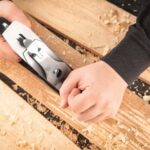Are you interested in woodworking but feel limited by your apartment living situation? In this article, we will explore how to woodwork in an apartment and overcome the challenges that come with a confined space. From selecting the right tools and materials to creating a dedicated workspace, we will provide you with practical tips and techniques for pursuing your woodworking passion within the constraints of an apartment.
One of the main challenges of woodworking in an apartment is the limited space available for storage, noise, and dust control. Traditional woodworking workshops are often spacious and equipped with specialized equipment, but in an apartment setting, it’s essential to adapt to a smaller area while being mindful of neighbors’ concerns. However, with the right approach and strategies, it is possible to enjoy woodworking without compromise.
Throughout this article, we will discuss how to select the appropriate tools and equipment for apartment woodworking, as well as how to create a dedicated workspace within your living quarters. We will also delve into safety measures, noise and dust control techniques, project planning, wood material selection, and offer ideas for inspiring apartment-friendly woodworking projects. Whether you’re a beginner or experienced woodworker, our guide will help you navigate through the unique challenges of woodworking in an apartment setting.
Selecting the Right Tools and Equipment for Apartment Woodworking
When it comes to woodworking in an apartment, selecting the right tools and equipment is crucial for a successful and efficient project. Limited space requires careful consideration of the tools you’ll be using, as well as their noise level and dust production. Here are some essential tools and equipment that are suitable for apartment woodworking:
- Compact Table Saw: Look for a portable and compact table saw that can still handle a variety of cuts.
- Handheld Router: A handheld router is versatile and perfect for apartment woodworking projects, allowing you to create intricate designs without taking up much space.
- Cordless Drill/Driver: Opt for a cordless drill/driver that can handle various tasks without the need for a bulky cord or loud motor.
- Folding Workbench: A folding workbench is a great space-saving solution that can be easily stored when not in use.
In addition to these basic tools, consider investing in noise-reducing equipment such as sound-dampening pads for your tools and anti-vibration mats for your workbench. These will help minimize noise disturbance to your neighbors while allowing you to work on your projects comfortably.
Lastly, explore the option of hand tools for certain tasks, as they are often quieter and more apartment-friendly than power tools. Hand planes, chisels, and Japanese pull saws are great alternatives that produce minimal noise and dust, making them ideal for apartment woodworking.
Remember, choosing the right tools and equipment will make all the difference in how to woodwork effectively within the confines of an apartment. By selecting compact, versatile, and quiet options, you can enjoy pursuing your woodworking passion without causing disruptions to those around you.
Creating a Dedicated Workspace for Apartment Woodworking
When it comes to woodworking in an apartment, creating a dedicated workspace can be a challenge due to the limited space available. However, with some creativity and thoughtful planning, it is possible to establish a functional and efficient area for your woodworking projects.
Maximizing Vertical Space
One of the key strategies for creating a dedicated woodworking space in an apartment is to maximize vertical space. Consider utilizing wall-mounted shelves or pegboards to store your tools and materials, keeping them off the floor and out of the way. This not only helps to free up valuable floor space but also makes it easier to keep your workspace organized.
Making Use of Multi-Functional Furniture
In an apartment setting, it is important to make the most of multi-functional furniture pieces. Look for a workbench that can double as a storage unit or a tabletop that can be used for both woodworking and other activities. This allows you to have a dedicated workspace without sacrificing too much living space.
Containment and Mobility
Consider using portable tool chests or rolling cabinets to contain your woodworking tools and equipment. These mobile storage solutions can be easily moved around the apartment as needed, providing flexibility in how you utilize your space. Additionally, investing in foldable workbenches or collapsible sawhorses can further optimize your apartment woodworking setup.
By carefully considering the layout of your apartment and implementing these creative solutions, you can create a dedicated workspace for woodworking that meets your needs while taking into account the limitations of apartment living.
Choosing the Right Wood Materials for Apartment Woodworking Projects
When it comes to woodwork in an apartment, choosing the right wood materials is crucial. Since space is limited in an apartment, it’s important to select wood that is versatile and suitable for small-scale projects.
One of the best options for apartment woodworking is plywood, which is affordable, readily available, and comes in various thicknesses and finishes. Plywood is also easy to work with and can be used for a wide range of projects such as shelving, storage units, and small furniture pieces.
Another great option for apartment woodworking projects is hardwood boards. While they may be slightly more expensive than other types of wood, hardwood boards are durable and can be used to create high-quality furniture and decorative items. Additionally, hardwood boards come in various sizes and types, allowing for flexibility in design and construction.
For those looking for eco-friendly options, reclaimed or salvaged wood is a fantastic choice for apartment woodworking projects. Not only does using reclaimed wood reduce waste and promote sustainability, but it also adds character and a unique look to your creations. Reclaimed wood can be sourced from old furniture, shipping pallets, or even discarded construction materials.
In summary, when selecting wood materials for apartment woodworking projects, consider factors such as versatility, affordability, durability, and sustainability. Plywood, hardwood boards, and reclaimed wood are all excellent options that can help you create beautiful and functional pieces while working within the constraints of an apartment space.
| Wood Material | Advantages |
|---|---|
| Plywood | Affordable, Versatile |
| Hardwood Boards | Durable,Flexible in design |
| Reclaimed Wood | Sustainable,Eco-friendly |
Safety Measures for Woodworking in a Confined Space
Woodworking in a confined space, such as an apartment, presents unique challenges when it comes to safety. Without proper precautions, the dust and noise from woodworking can disrupt neighbors and pose health hazards. Here are some essential safety measures to consider when engaging in woodworking in an apartment.
Personal Protective Equipment
When working with wood in a confined space, it is crucial to protect yourself from harmful dust and debris. Always wear a dust mask to prevent inhalation of wood particles and use safety goggles to shield your eyes from flying debris. Additionally, consider wearing ear protection to minimize the impact of noise on your hearing.
Proper Ventilation
One of the key safety measures for woodworking in an apartment is ensuring proper ventilation. Use a high-quality dust extractor or shop vacuum with a HEPA filter to capture fine particles and minimize airborne dust. Consider setting up fans near windows or doors to improve airflow and reduce the buildup of sawdust in your workspace.
Fire Safety
In a confined space, fire safety is paramount when working with wood and power tools. Keep a fire extinguisher handy in case of emergencies and avoid using flammable substances near heat sources or electrical equipment. It’s also important to be mindful of sparks when using power tools, especially those that generate heat.
By implementing these safety measures, you can effectively manage the risks associated with woodworking in an apartment while ensuring a safe and comfortable environment for both yourself and your neighbors.
Overall, prioritizing safety when undertaking woodworking projects in an apartment is essential for creating a secure work environment and maintaining positive relations with those living nearby.
Techniques and Tips for Noise and Dust Control in Apartment Woodworking
Woodworking in an apartment can present some unique challenges, particularly when it comes to noise and dust control. However, with the right techniques and tips, it is possible to minimize the impact of these factors on your living space.
One effective strategy for controlling both noise and dust is to invest in high-quality power tools with built-in dust collection systems. These tools not only help to keep your work area cleaner but also reduce the amount of sawdust and debris that gets released into the air. Additionally, utilizing hand tools for certain tasks can also help to minimize noise and dust production.
Another important consideration is the use of a shop vacuum or dust extractor. This type of equipment is essential for keeping your workspace clean and free from airborne particles. By connecting your power tools to a dust extraction system, you can significantly reduce the amount of sawdust that accumulates in your apartment.
Furthermore, implementing soundproofing measures can help mitigate noise disturbances caused by woodworking activities. Installing sound-absorbing materials such as acoustic foam panels or heavy curtains can help dampen the sound of cutting, sanding, and other noisy processes. Additionally, working during designated quiet hours can further minimize any disruptions to neighbors or household members.
It’s important to remember that while woodworking in an apartment requires extra attention to noise and dust control, it is entirely possible with the right tools and techniques. By implementing these strategies, you can enjoy pursuing your passion for woodworking without creating undue disturbance in your living environment.
| Techniques | Tips |
|---|---|
| Invest in power tools with dust collection systems | Use a shop vacuum or dust extractor |
| Utilize hand tools for certain tasks | Implement soundproofing measures such as acoustic foam panels |
| Connect power tools to a dust extraction system | Work during designated quiet hours |
How to Plan and Execute Apartment-Friendly Woodworking Projects
Living in an apartment can pose unique challenges for woodworking enthusiasts, but with the right planning and execution, it is possible to create beautiful and functional wood pieces in a limited space. Here are some tips on how to plan and execute apartment-friendly woodworking projects:
1. Assess Your Space: Before starting any woodworking project in your apartment, take a good look at your available space. Consider the size of your tools, the amount of space you have for storage, and the area where you will be doing most of your work. This will help you determine the types of projects that are feasible within your confines.
2. Choose Small-Scale Projects: When space is limited, it’s best to focus on small-scale woodworking projects that won’t take up too much room. Consider making items such as shelves, picture frames, or small furniture pieces like side tables or stools. These projects can be fulfilling and practical while requiring minimal space to work on.
3. Optimize Storage Solutions: In an apartment, efficient storage solutions are key to maintaining a functional workspace. Consider investing in stackable bins, wall-mounted tool organizers, and compact storage units to keep your tools and materials organized and out of the way when not in use.
By taking these considerations into account when planning your apartment-friendly woodworking projects, you can enjoy the art of woodworking while making the most of your limited space.
Inspiration and Ideas for Apartment Woodworking Projects
Woodworking in an apartment may seem challenging, but with the right inspiration and ideas, it is entirely possible to create beautiful and functional pieces within the confines of a small space. Despite the limited area, there are numerous woodworking projects that are perfectly suited for apartment living.
One popular option is creating custom shelves and storage solutions to maximize vertical space and keep your apartment organized. Another idea is crafting small furniture pieces like side tables, stools, or even a compact desk that can fit seamlessly into your living space.
Additionally, apartment woodworking projects can also include decorative items such as picture frames, wall art, and planters. These smaller-scale projects not only allow you to practice your woodworking skills but also add a personal touch to your apartment’s décor. Furthermore, creating custom wooden accents like serving trays or coasters can be a great way to enhance your living space while honing your woodworking craft.
When it comes to deciding on an apartment woodworking project, consider the specific needs of your living space and how you can address them through customization. Whether it’s building a storage solution for an awkward corner or designing a unique piece of furniture to serve multiple purposes, there are endless possibilities for creating practical and aesthetically pleasing items that complement your apartment.
With the right ideas and inspiration, woodworking in an apartment can truly become a rewarding and fulfilling experience.
Conclusion
In conclusion, while woodworking in an apartment presents its challenges, it is certainly possible to embrace the art of woodworking in a limited space. By selecting the right tools and equipment, creating a dedicated workspace, choosing the appropriate wood materials, prioritizing safety measures, and implementing techniques for noise and dust control, apartment dwellers can successfully pursue their woodworking passion. With careful planning and execution, apartment-friendly woodworking projects can be both fulfilling and rewarding.
The key to woodworking in an apartment lies in creativity and resourcefulness. By making the most of the available space and utilizing quiet tools and techniques, individuals can engage in woodworking without disturbing neighbors or violating lease agreements. Moreover, with the plethora of inspiration and ideas available for apartment woodworking projects, enthusiasts can find countless opportunities to hone their skills and produce beautiful pieces right from the comfort of their own homes.
Ultimately, woodworking is a timeless craft that should not be limited by living space. With patience, perseverance, and the adoption of suitable practices for apartment-based woodwork, individuals can enjoy this satisfying hobby regardless of their living situation. By following the tips and guidelines outlined above on how to woodwork in an apartment effectively, anyone can make their woodworking dreams a reality within the confines of their own home.
Frequently Asked Questions
Can I Do Woodworking Inside?
Yes, you can do woodworking inside as long as you have the necessary space and ventilation. It’s important to have a well-ventilated area to prevent exposure to sawdust and fumes.
Is It Safe to Do Woodworking in a Basement?
It is generally safe to do woodworking in a basement, but there are some precautions to consider. Basements can be damp and prone to mold, so it’s important to keep the area well-ventilated and dry.
Can I Do Wood Work at Home?
Yes, you can do woodwork at home if you have the space and necessary tools. Setting up a dedicated workspace for your woodwork projects ensures safety and keeps your living area free from sawdust and other potential hazards.

Hi everyone! I’m a woodworker and blogger, and this is my woodworking blog. In my blog, I share tips and tricks for woodworkers of all skill levels, as well as project ideas that you can try yourself.





